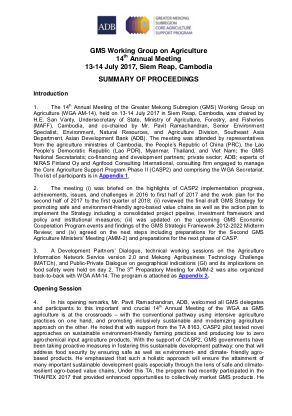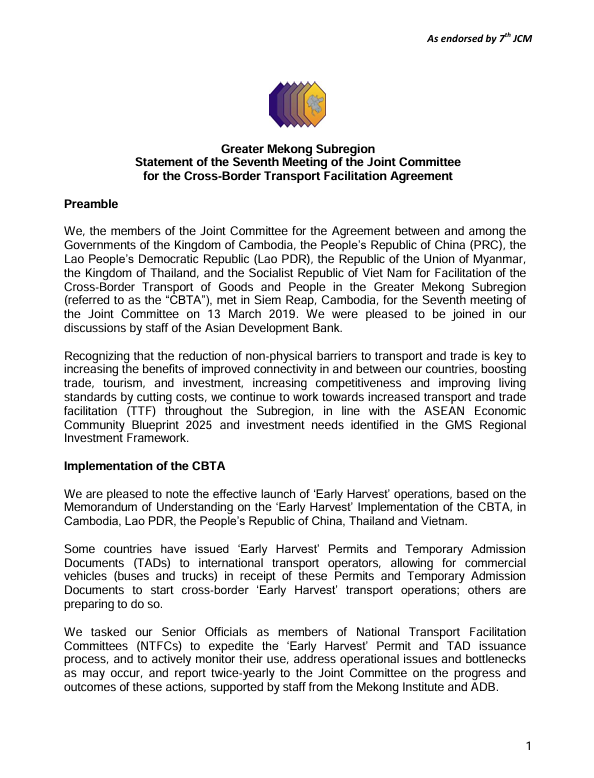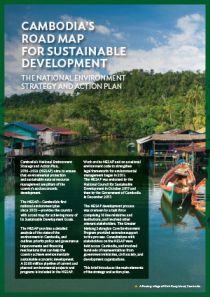
Integrating Strategic Environmental Assessment into Power Development Planning in Viet Nam
This publication presents the integration of a strategic environmental assessment in the revised Power Development Plan VII of Viet Nam.

This publication presents the integration of a strategic environmental assessment in the revised Power Development Plan VII of Viet Nam.

The Greater Mekong Subregion Working Group on Agriculture held its 16th meeting on 17–18 June 2019 in Luang Prabang, Lao People's Democratic Republic.
This 5-year strategy identifies operational priorities for health cooperation for 2019–2023. It is a product of extensive consultations with members of the Greater Mekong Subregion (GMS) Working Group on Health Cooperation, GMS government stakeholders, and other GMS partners.

This is the summary of proceedings from the 25th Meeting of the Regional Power Trade Coordination Committee (RPTCC-25) on 20 to 22 March 2019 in Bangkok, Thailand.

This is the statement issued by the Joint Committee for the Cross-Border Transport Facilitation Agreement during its seventh meeting in Siem Reap, Cambodia on 13 March 2019.

This publication provides an assessment of the agriculture, natural resources, and rural development sector in the Lao People's Democratic Republic and explains the country's and the Asian Development Bank's strategic investment priorities.

Cambodia’s national environment plan provides the country with a road map for achieving many of its Sustainable Development Goals.
A technical assistance project in the Greater Mekong Subregion (GMS) is helping Myanmar eliminate malaria by 2030.

The Asian Development Bank recently moved from an infrastructure-based support model for the People's Republic of China to a model that will improve the quality of economic growth by underlining environmental protection and social sector development.

The Asian Development Bank's operations in the Lao People’s Democratic Republic focus on improving physical connectivity to catalyze private sector investment, generate employment, and boost incomes; developing skills that will promote nonresource sectors; and expanding access to health services to enhance labor productivity.